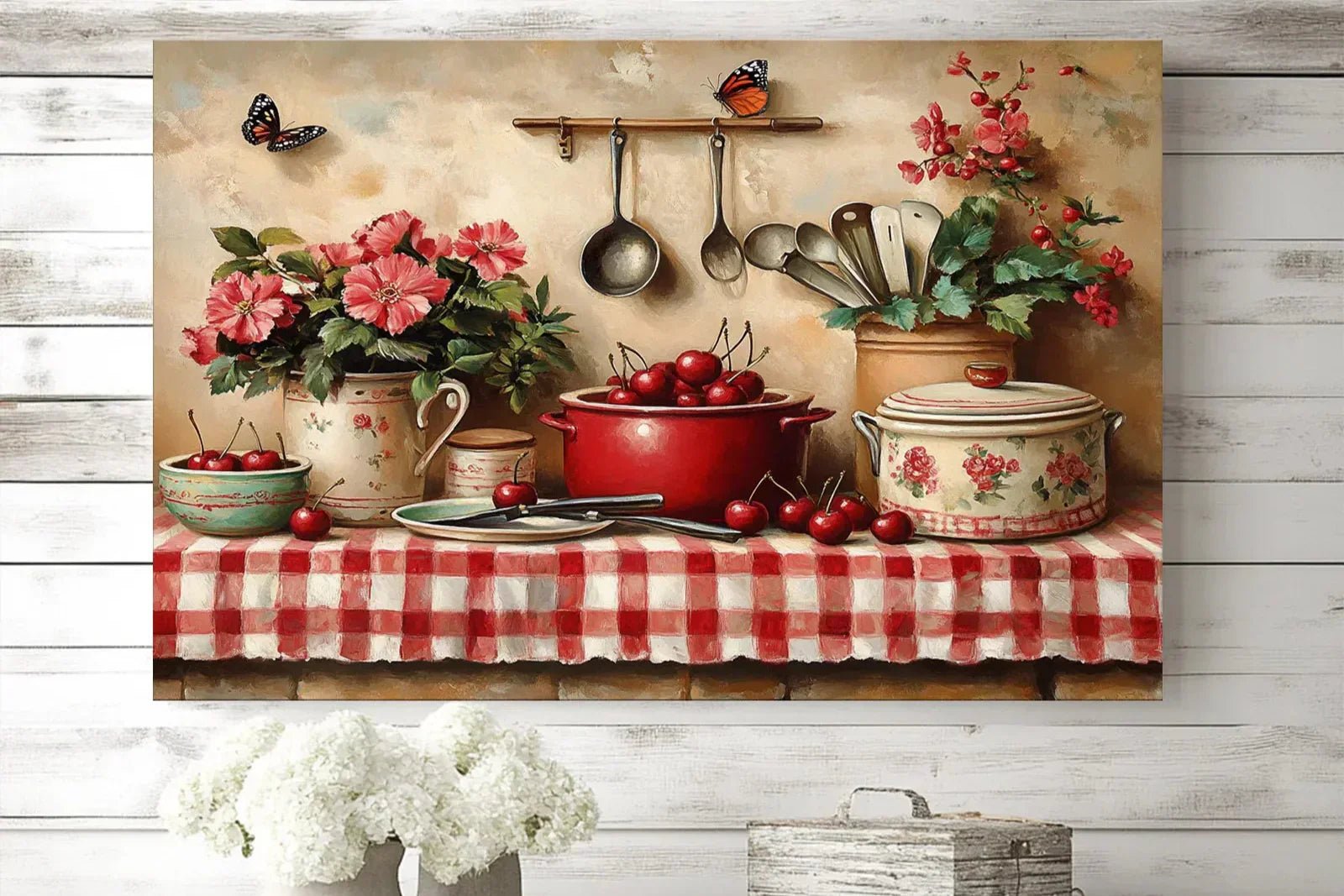In an age where digital memories abound, transforming cherished moments into tangible art pieces has become increasingly popular. Custom canvas prints offer a unique and elegant way to display your favorite photographs, turning them into stunning focal points for any space. Whether it's a breathtaking landscape from a memorable trip, a heartwarming family portrait, or a vibrant snapshot from a special event like a wedding or birthday party, custom canvas prints elevate your images beyond the screen. But have you ever wondered about the intricate process behind these beautiful creations? How exactly are custom canvas prints made, from a digital file to a ready-to-hang masterpiece? This article delves into the fascinating journey of custom canvas prints, exploring the steps involved in transforming your digital photos into personalized works of art. We'll uncover the technology, materials, and craftsmanship that go into creating high-quality custom canvas photo prints, ensuring your memories are preserved with exceptional clarity and artistic flair. Join us as we explore the world of custom photo canvas prints and the meticulous process that brings your visions to life.
Table of Contents
1.The Digital Foundation: Preparing Your Image
2.The Printing Process: Bringing Images to Life
3.Material Matters: Canvas and Inks
4.The Art of Stretching and Finishing
5.Quality Control and Longevity
6.Why Choose Custom Canvas Prints from Printtoucan.com?
1. The Digital Foundation: Preparing Your Image
The journey of a custom canvas print begins long before any ink touches canvas—it starts with the digital image itself. The quality of the final print is heavily dependent on the preparation of the digital file. This initial phase is crucial for ensuring that your cherished memories translate beautifully onto the textured surface of a canvas. Several technical aspects must be considered to achieve optimal results, including resolution, color mode, and bleed area .
Resolution (DPI): One of the most critical factors is the image resolution, measured in Dots Per Inch (DPI). For high-quality canvas prints, a resolution of 300 DPI is generally recommended. This ensures that the image remains sharp and clear, even when enlarged for bigger canvas sizes. A lower DPI can lead to pixelation and a blurry appearance, especially on larger prints. Therefore, it's essential to start with a high-resolution image to maintain clarity and detail .
Color Modes (RGB vs. CMYK): Digital images are typically created in RGB (Red, Green, Blue) color mode, which is optimized for display on screens. However, printing processes use CMYK (Cyan, Magenta, Yellow, Black) color mode. Converting the image from RGB to CMYK before printing is a vital step to ensure color consistency and accuracy. This conversion helps to prevent unexpected color shifts and ensures that the printed colors closely match what you see on your screen .
Bleed Area: The bleed area refers to the extra margin around the edges of your image that will wrap around the canvas frame. This is a critical consideration to prevent any unintended white edges from appearing on the sides of your finished canvas print after it's stretched. A typical bleed area of 1.5 to 2 inches is recommended for most canvas prints. If your image has important details near the edges, it's advisable to keep them well within the safe area to avoid them being lost during the stretching process .
Image Correction and File Format: Beyond these technical specifications, image correction plays a significant role. Adjustments to brightness, contrast, and sharpness can enhance the visual appeal of the print. Often, increasing brightness by 10-15% can compensate for any dullness that might occur during printing. Cropping and composition are also important for artistic appeal, with techniques like the 'rule of thirds' often employed. Finally, saving the file in a suitable format like JPEG or PNG is crucial. JPEG is excellent for photographs with rich colors and gradients, while PNG is preferred for images requiring absolute color fidelity and transparency .

2. The Printing Process: Bringing Images to Life
Once the digital image is meticulously prepared, the next crucial step in creating custom canvas prints is the actual printing process. This is where the digital data is transformed into a physical image on the canvas material. The industry standard for high-quality canvas prints is often the Giclée printing method, known for its exceptional color accuracy, longevity, and detail .
Giclée Printing: Giclée (pronounced zhee-clay) is a French term meaning 'to spray' or 'to squirt,' referring to the way an inkjet printer applies ink. This method utilizes high-end inkjet printers, such as those from Epson, which are specifically designed for fine art reproduction. These printers use a vast array of tiny nozzles to spray microscopic dots of archival pigment inks onto the canvas. The precision of this process allows for incredibly smooth color transitions, sharp details, and a wide color gamut, resulting in prints that closely resemble original artwork .
Archival Pigment Inks: The choice of ink is paramount for the durability and vibrancy of custom canvas photo prints. Archival pigment inks are used in Giclée printing because they are formulated to resist fading, yellowing, and cracking over time. Unlike dye-based inks, which can be susceptible to environmental factors, pigment inks are made from finely ground particles suspended in a solution, offering superior lightfastness and water resistance. This ensures that your custom photo canvas prints will maintain their vivid colors and integrity for many decades, making them a true heirloom piece .
Printer Technology: Professional canvas printers are large-format machines capable of handling rolls of canvas material. They are equipped with advanced color management systems to ensure consistent and accurate color reproduction. The canvas is fed through the printer, and the image is printed directly onto the specially coated surface. The coating on the canvas is designed to optimize ink absorption and enhance color vibrancy, contributing to the overall quality of the print.
This sophisticated printing process, combined with high-quality archival inks, is what distinguishes professional custom canvas printing from standard home printing. It ensures that every detail of your photograph, from the subtle nuances of color to the intricate textures, is faithfully reproduced on the canvas, creating a stunning and lasting piece of art.

3. Material Matters: Canvas and Inks
The foundation of any exceptional custom canvas print lies in the quality of its materials, specifically the canvas fabric and the inks used. These components work in tandem to determine the print's visual appeal, durability, and longevity. Understanding the different types of canvas and the properties of archival inks is key to appreciating the craftsmanship behind these personalized art pieces.
Canvas Materials: Canvas used for printing is not the same as traditional artist's canvas. It is specially treated to accept inkjet inks and provide a vibrant, long-lasting image. The most common types of canvas materials include cotton, polyester, and poly-cotton blends .
•Cotton Canvas: Known for its natural texture and softness, cotton canvas is often preferred for fine art reproductions. It offers a classic, artistic feel and is excellent for capturing the subtle nuances of an image. However, pure cotton can be more prone to stretching and is generally more expensive than other options .
•Polyester Canvas: Polyester canvas is highly durable and holds ink exceptionally well, making it ideal for vibrant and detailed prints. It is less expensive than cotton and more resistant to environmental factors like humidity. While it may lack the organic feel of cotton, its strength and color retention make it a popular choice for many custom canvas prints .
•Poly-Cotton Blends: This blend combines the best attributes of both cotton and polyester. Typically, a blend of 65% cotton and 35% polyester offers the natural texture and feel of cotton with the added durability and ink-holding capabilities of polyester. This makes poly-cotton blends a versatile choice for a wide range of decorative and artistic prints, balancing aesthetic appeal with practical benefits.
Ink Technology: As mentioned in the previous section, archival pigment inks are the gold standard for custom canvas photo prints. These inks are formulated to be highly resistant to UV light, moisture, and environmental pollutants, which are common causes of fading and degradation in prints. The use of pigment-based inks ensures that the colors remain true and vibrant for decades, far outlasting dye-based inks often found in consumer-grade printers .
Coating and Finish: Beyond the raw material, the canvas often features a specialized coating that enhances ink absorption and protects the printed image. This coating can also influence the final finish of the print, with options such as matte, satin, glossy, or metallic. Each finish offers a different aesthetic, from the non-reflective, soft look of a matte finish to the vibrant, high-contrast appearance of a glossy finish. The choice of finish can significantly impact how the canvas photo prints custom made piece interacts with light and the overall ambiance of the space it inhabits.
By carefully selecting the right canvas material and utilizing advanced archival ink technologies, manufacturers of custom photo canvas printing ensure that each piece is not only visually stunning but also built to last, preserving your precious memories for generations.



4. The Art of Stretching and Finishing
Once the image is printed onto the canvas, the transformation from a flat piece of fabric into a three-dimensional work of art begins. This is achieved through the meticulous process of stretching and finishing, which gives the custom canvas print its characteristic gallery-wrapped look and prepares it for display.
Stretching the Canvas: The most common method for finishing a canvas print is to stretch it over a wooden frame, known as stretcher bars. These bars are typically made from solid hardwood, such as pine, and are precision-cut to ensure perfect 90-degree angles at the corners. The thickness of the stretcher bars can vary, with a common depth being 1.25 inches, which provides a substantial and professional appearance on the wall.
The stretching process is a craft that requires both skill and specialized tools. The canvas is carefully aligned over the frame, and then, using canvas stretching pliers, it is pulled taut and secured to the back of the frame with staples. A properly stretched canvas should be tight enough to produce a drum-like sound when tapped. This tension is crucial for preventing the canvas from sagging or warping over time, ensuring that the artwork remains pristine.
Gallery Wrap: The term "gallery wrap" refers to the method of stretching the canvas so that the image wraps around the sides of the stretcher bars. This creates a continuous, seamless look that extends the artwork to the edges of the frame, eliminating the need for an external frame. The portion of the image that wraps around the sides is carefully considered during the initial image preparation stage to ensure that no important details are lost. This frameless presentation gives custom canvas prints with your photos a modern and clean aesthetic that is popular in contemporary interior design.
Finishing Touches: After the canvas is stretched, the finishing touches are applied. This may include adding a protective coating or varnish to the surface of the print, which can enhance its durability and provide additional UV protection. For framed canvases, hanging hardware is installed on the back of the frame. This hardware is carefully measured and attached to ensure that the canvas hangs evenly and securely on the wall. The back of the canvas is often finished with a dust cover to protect it from dirt and debris.
This final stage of stretching and finishing is what truly brings the custom canvas prints from photos to life, transforming them from a simple print into a ready-to-hang piece of art that can be proudly displayed in any home or office.

5. Quality Control and Longevity
A crucial aspect of producing high-quality custom canvas prints is a rigorous quality control process. Throughout each stage of production, from image preparation to final finishing, every detail is inspected to ensure that the final product meets the highest standards of excellence. This commitment to quality is what guarantees the longevity and enduring beauty of your personalized artwork.
Color Accuracy and Consistency: One of the primary focuses of quality control is ensuring color accuracy and consistency. Professional print shops use sophisticated color management tools and software to calibrate their printers and monitors, ensuring that the colors in the final print are a faithful representation of the original digital image. Test prints are often produced and compared against the digital file to verify color accuracy before the final print is made.
Print Quality Inspection: After the image is printed, the canvas is carefully inspected for any imperfections, such as smudges, streaks, or banding. The print is also checked for sharpness and clarity to ensure that all the details of the original photograph have been accurately reproduced. Any prints that do not meet the stringent quality standards are discarded and reprinted.
Stretching and Finishing Inspection: The stretching and finishing process is also subject to close scrutiny. The canvas is checked to ensure that it is stretched evenly and tautly, with no sagging or wrinkles. The corners are inspected to ensure they are neatly folded and secured. If a frame is included, it is checked for any defects or damage. The hanging hardware is also inspected to ensure it is securely attached and properly aligned.
Longevity and Archival Quality: The longevity of a custom canvas print is a direct result of the quality of the materials and the printing process used. By using archival pigment inks and high-quality canvas materials, professional printmakers can create prints that are designed to last for generations. These materials are resistant to fading, yellowing, and cracking, ensuring that your cherished memories will remain vibrant and beautiful for many years to come. With proper care, a high-quality canvas print can last for over a century, becoming a treasured family heirloom.
This meticulous attention to detail and commitment to quality at every step of the process is what sets professional custom canvas printing apart. It ensures that you receive a product that is not only visually stunning but also a lasting tribute to your most precious moments.

6. Why Choose Custom Canvas Prints from Printtoucan.com?
At Printtoucan.com, we understand the profound value of your memories. As a leading US-based Print-on-Demand (POD) company, we specialize in transforming your most cherished photographs into exquisite custom canvas prints that stand the test of time. Our commitment to quality, customization, and customer satisfaction sets us apart, ensuring that every piece we create is a true reflection of your unique story.
Unleash Your Creativity with Custom Sizes: We believe that your art should fit your space perfectly. That's why Printtoucan.com offers a wide range of custom sizes for your decorative prints. Whether you envision a grand statement piece for your living room or a series of smaller prints to create a gallery wall, our flexible sizing options ensure that your custom canvas prints are tailored precisely to your needs. This dedication to bespoke solutions allows you to truly personalize your home decor and bring your vision to life.
Preserving Special Moments: Life is a collection of unforgettable moments, and we are here to help you preserve them in the most beautiful way possible. From the joyous celebration of a wedding, the laughter of a birthday party, the adventure of a travel escapade, to the camaraderie of a special gathering, Printtoucan.com specializes in immortalizing these precious memories on canvas. Our high-quality custom canvas photo prints capture the emotion, detail, and vibrancy of your photographs, allowing you to relive those moments every day.
The Printtoucan.com Advantage: We combine cutting-edge printing technology with premium materials and meticulous craftsmanship to deliver unparalleled quality. Our process ensures that your custom photo canvas prints are not only visually stunning but also durable and long-lasting, becoming cherished heirlooms for generations. When you choose Printtoucan.com, you're not just getting a print; you're investing in a piece of art that tells your story.
Here's a quick overview of why Printtoucan.com is your ideal partner for custom canvas prints from photos:
| Feature | Benefit for You |
| Custom Sizes | Perfect fit for any space, tailored to your unique decor needs. |
| High-Quality Materials | Archival canvas and inks ensure vibrant, long-lasting prints. |
| Preserves Special Moments | Immortalize weddings, birthdays, travel, and parties with stunning clarity. |
| Expert Craftsmanship | Meticulous stretching and finishing for a professional, gallery-ready look. |
| US-Based POD Company | Reliable service and efficient delivery for American customers. |
Choose Printtoucan.com to transform your photos into timeless art. Let us help you celebrate your special moments with beautiful, personalized canvas photo prints custom made just for you.





